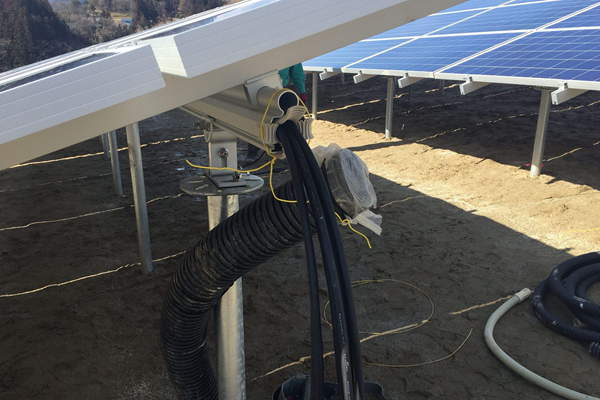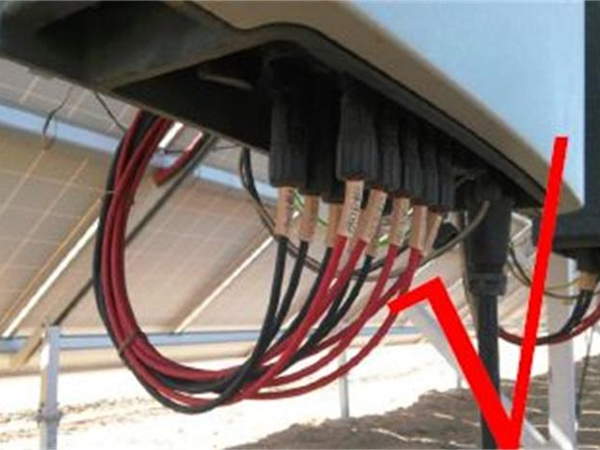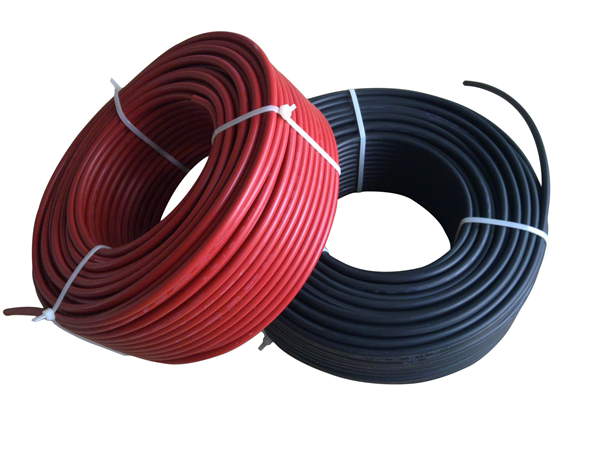Characteristics Of Photovoltaic Cables
Photovoltaic cable is an important device in photovoltaic power generation systems. It can be used in power systems or communication lines as relay equipment when transmitting power from a power source.
The cable should have reliable physical characteristics such as temperature resistance, flame retardancy, and insulation properties. Photovoltaic cables generate harmful heat when working in high-temperature environments, which affects the cable performance.
Therefore, photovoltaic cables should have high-temperature resistance, flame retardant, insulation, anti-oxidation, anti-aging, and other characteristics. In high-temperature insulation materials are prone to aging, and decomposition failure, thus affecting the service life of the cable.
At the same time, the increase in temperature leads to a decline in the strength of cable insulation materials, thermal expansion coefficient increases, reducing the cable’s ability to withstand environmental stress.
In addition, high-temperature aging leads to aging of cable insulation materials, oxidation, and water loss, resulting in increased resistance, thus leading to unstable cable quality and unreliable operation.
Photovoltaic cables in the process of use due to high temperatures thus leading to the aging failure of the cable high temperature insulation layer.
In addition, the temperature rise leads to aging failure of photovoltaic cables, such as cable due to high temperature caused by cracking of insulation materials so that leakage and other reasons caused by the fire hazard level rise.
Even due to temperature changes resulting in product quality instability and accidents resulting in economic losses, personal injury, and other risks. Therefore, the manufacture of photovoltaic cables must consider the relationship between their temperature resistance characteristics and insulation characteristics.

1. Temperature Resistance
Photovoltaic cable in the work process, the cable insulation layer due to temperature rise and insulation defects, which leads to insulation aging failure.
Therefore, the cable should have a reliable temperature resistance during operation to ensure the safety and reliability of the cable.
Cable temperature resistance includes insulation temperature and cable life, in general, if the insulation temperature exceeds 70 ℃, the cable life will be less than 20%, more than 80 ℃, and the cable life will be more than 50%.
For photovoltaic cables with insulation defects generated by high temperatures, the cable life may be shortened. In addition, the high-temperature phenomenon that occurs during the laying process causes the cable insulation material to crack causing a short circuit in the cable, or even a fire accident.
Therefore, the manufacture of photovoltaic fiber or other temperature-sensitive equipment must be considered temperature resistance requirements.
2. Flame Retardant Ability
Flame retardant is one of the characteristics of the cable should be, flame retardant can prevent cable damage due to high temperature caused by the high temperature of the cable.
In addition, photovoltaic cable insulation materials should have good flame retardant properties, will not produce harmful fumes, and will not occur under high-temperature environment cable insulation layer is thermally decomposed to produce toxic and harmful gases, while reducing the decomposition temperature of the cable insulation materials.
Ordinary photovoltaic cables, generally do not use flame retardant materials to ensure their resistance to high-temperature operation, thereby improving the safety of photovoltaic cables.
Ordinary cables reduce the use and extend the service life of the cable, usually using flame retardant materials to prevent the cable from heat to make the cable core burn and reduce the cable safety operating distance. However, with global climate change, the temperature is getting higher in more and more areas, and the risk of failure in use and thus the risk of fire increases.
Therefore, once the insulation layer is heated at high temperatures, it will burn and produce harmful gases and heat that threaten people’s lives and property. At the same time, the burning of insulation materials at high temperatures produces a large number of decomposition of toxic gases and heat, leading to increased fire safety risks.
In addition, if the insulation material’s spontaneous combustion is accompanied by high-temperature combustion, it will also cause great safety risks and property damage to users.
Therefore, we must choose non-combustible cable materials to ensure the safety of personal property is the first factor to consider in the production process.

3. Insulation Characteristics
Insulation is one of the main components of the cable, it not only plays a role in ensuring the transmission of the wire but also ensures the safe operation of the cable is an important guarantee.
When the temperature is too high, the insulation material will decompose and the insulation material itself will crack, thus leading to insulation failure. When designing cables, insulation materials should be selected according to the cable application environment and tested to ensure reliable and stable cable electrical performance.
In practical testing, the coefficient of thermal expansion (K) is usually used as the insulation characteristics of the insulation materials test index, K = 1/2 K, K = 20 mV/(℃- h) can be measured using resistivity.
The specific value of K=1/2 K as the insulation property test index of insulating materials should be determined according to the climatic conditions and process parameters in the operating environment of system equipment.
In general, the construction of PV power plants will expose the insulation materials to the outdoor natural environment for a long period and a large area in the open air, resulting in possible damage to the insulation materials or internal local failures resulting in insulation failure.
To prevent insulation failure and fire accidents and take insulation measures to prevent the spread of fire and expand the accident losses, it is necessary to choose insulation materials that can withstand large changes in the working temperature of solar power generation equipment and have good high-temperature performance for design, manufacture and installation and commissioning.
4. Anti-Oxidation Performance
Anti-oxidation performance is an important part of cable performance, which mainly refers to the decomposition of harmful substances such as oxygen molecules and oxygen radicals present on the cable surface during the service life of the cable.
With the aging of the cable insulation layer, the oxidation of the cable surface will cause the cable insulation layer to crack, resulting in cable safety hazards. As the cable is exposed to air for a long time, the antioxidant performance is reduced, and oxidation will produce a large number of free radicals, which will lead to the cracking of the cable insulation layer, thus leading to the loss of protection of wire insulation and causing fire accident hazards and other hazardous accidents.
Therefore, it is important to develop a cable that can resist oxidation damage. At present, there are three kinds of coatings widely used in the market, namely, vinyl chloride oxygen-free PVC insulation coating and polyvinyl chloride copolymer fiber insulation coating.
These three coatings have excellent oxidation resistance and high-temperature resistance, high chemical stability and good water resistance, sweat and salt resistance, and resistance to solvent corrosion in the air.
However, polyolefin rubber as a flame retardant coating is rarely used, the reason is that it is expensive and difficult to industrialize production.

5. Heat Resistance Performance
The impact of environmental stress resistance on the heat resistance of photovoltaic cables is relative, such as the cable due to atmospheric friction in the atmosphere and thermal stress, the cable in the same environment with thermal stress increases, and the insulation material in a high-temperature environment will decompose and fail.
Such as the cable at high temperatures when the insulation layer is heated, and when the temperature rises to a certain temperature insulation layer due to elastic deformation and cracking, the cable can operate normally for a long time under the specified temperature.
According to the relevant provisions, the heat-resistant performance of the cable must meet the specified requirements (at a temperature of 120 ℃, the conductor temperature values measured at each end of the cable).
In addition, the heat resistance of the cable must be measured using an instrument when testing the heat resistance of the cable. After determining the insulation material, it can be measured with a thermometer.
When the ambient temperature is 120°C, the conductor temperature is measured.
When the ambient temperature is 110°C, the conductor temperature is measured.
When the ambient temperature is 150℃, the conductor temperature should be measured.
When the ambient temperature is 180℃, the conductor temperature should be measured.
The conductor temperature needs to be measured when the ambient temperature is 250°C. The conductor temperature needs to be measured when the ambient temperature is 250°C.
When the ambient temperature is 250℃, the insulation material temperature should be measured.
If a thermocouple is used to measure the resistance of the wire surface and both temperature (220°C) and current (300 A) can be measured at the same time, then both measured resistance values are satisfied.
Therefore, it is possible to calculate the resistance between the wire and the heat exchanger based on the test data and determine whether to use a thermocouple to measure the heat generation voltage and its current as two variables.
6. Anti-Aging Properties
Anti-aging refers to the use of the cable’s environment in the use of the aging phenomenon as the ambient temperature increases, including oxidation, corrosion, high temperature, and low temperature.
Oxidation refers to the oxidation reaction of cable insulation materials, and corrosion refers to the transformation of cable insulation materials from a single to a component.
Oxidation at room temperature can lead to the decomposition and destruction of insulation materials, and the formation of oxides, thereby reducing the insulation performance.
And the cable in a long-term high-temperature state will produce excessive heat and oxygen and water vapor so that the insulation material oxidation and the insulation performance are reduced.
Corrosion refers to the cable in the long-term use process due to a variety of factors leading to corrosion of the insulator-metal surface or internal. Such as temperature changes, humid environments, chemicals, etc.
Low temperatures will lead to insulator overheating affecting the insulation’s performance.
The same in the humidity environment is also easy to make the insulator deformation damage and cause short circuit accidents.
Water vapor will lead to oxidation of the insulator and fire accidents, damage to the cable insulation performance, and other losses.
Therefore, the design of photovoltaic wire and cable products must be considered to prevent the aging process of the insulator-metal surface or internal corrosion phenomenon on the insulation layer and connection materials caused by the degree of damage.
—ZMS Cable Group
